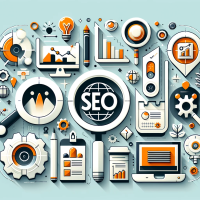
Email marketing is one of the most effective and affordable ways to reach and engage your audience, drive conversions, and grow your business. According to a 2020 report by Litmus, email marketing can generate an average return on investment (ROI) of $36 for every dollar spent1. However, email marketing is not a one-size-fits-all solution. You need to tailor your strategy, content, and design to your specific goals, industry, and audience.
To help you get inspired and learn from the best, we have compiled some of the most successful email marketing case studies and tips from Canadian businesses and agencies. These examples will show you how email marketing can help you achieve various objectives, such as increasing brand awareness, generating leads, boosting sales, retaining customers, and more.
Here are 10 important points to consider when planning and executing your email marketing campaigns in 2023:
- Use an email marketing platform. If you want to run effective and professional email campaigns, you need to use an email marketing platform that can help you manage your contacts, create and send emails, track and analyze your results, and optimize your performance. There are many email marketing tools available, such as Mailchimp, Constant Contact, and Campaign Monitor, that offer various features and pricing plans to suit your needs and budget. For example, Mailchimp is a popular email marketing platform that offers a free plan for up to 2,000 contacts and 10,000 emails per month, as well as paid plans that start from $9.99 per month2.
- Segment your audience. One of the key benefits of email marketing is that you can personalize your messages and offers to different segments of your audience based on their characteristics, preferences, and behaviors. This can help you increase your open rates, click-through rates, and conversions, as well as improve your customer satisfaction and loyalty. For example, Shopify, a Canadian e-commerce platform, uses email segmentation to send relevant and timely emails to its customers based on their industry, location, purchase history, and more3.
- Craft eye-catching subject lines. Your subject line is the first thing that your recipients see when they receive your email, and it can make or break your open rates. Therefore, you need to craft subject lines that are clear, concise, and compelling, and that capture the attention and curiosity of your audience. You can use various techniques to create effective subject lines, such as asking questions, using numbers, creating urgency, or adding emojis. For example, Indigo, a Canadian bookstore and lifestyle retailer, uses subject lines that are short, catchy, and relevant to its products and promotions, such as “The best books of 2022 (so far)” or “Last chance to save 25% on select toys”4.
- Optimize your design and layout. The design and layout of your email can have a significant impact on your engagement and conversion rates, as well as your brand image and reputation. You need to ensure that your email design and layout are attractive, consistent, and user-friendly, and that they match your brand identity and voice. You also need to make sure that your email is responsive and mobile-friendly, as more than half of all emails are opened on mobile devices5. For example, Frank And Oak, a Canadian clothing brand, uses a simple and elegant email design and layout that showcases its products and offers, and that adapts well to different screen sizes and devices6.
- Write engaging and valuable content. The content of your email is the core of your email marketing campaign, and it can determine whether your recipients will take action or not. You need to write content that is engaging, valuable, and relevant to your audience, and that conveys your message and offer clearly and persuasively. You also need to use a friendly and conversational tone that reflects your brand personality and builds rapport with your audience. For example, Wealthsimple, a Canadian online investment platform, uses content that is informative, educational, and entertaining, and that explains its products and services in a simple and relatable way7.
- Include clear and compelling calls to action. Your call to action (CTA) is the element of your email that tells your recipients what you want them to do next, and it can influence your click-through and conversion rates. You need to include clear and compelling CTAs that motivate your audience to take action, such as “Shop now”, “Learn more”, or “Sign up”. You also need to make your CTAs stand out and easy to click, by using contrasting colors, large fonts, and buttons or links. For example, Lululemon, a Canadian athletic apparel brand, uses CTAs that are bold, bright, and direct, and that encourage its customers to shop its products and join its community8.
- Test and optimize your emails. Testing and optimizing your emails is an essential part of email marketing, as it can help you improve your performance and results over time. You need to test different aspects of your emails, such as subject lines, content, design, layout, CTAs, and send times, and measure their impact on your key metrics, such as open rates, click-through rates, conversions, and revenue. You can use various methods and tools to test your emails, such as A/B testing, multivariate testing, or email analytics. For example, Unbounce, a Canadian landing page builder, uses A/B testing to experiment with different email elements and optimize its campaigns9.
- Follow email regulations and best practices. Email marketing is regulated by various laws and regulations that aim to protect the privacy and rights of consumers, and to prevent spam and fraud. You need to follow these laws and regulations when sending emails to your audience, or you may face legal consequences and damage your reputation. Some of the main email regulations that you need to comply with are the Canadian Anti-Spam Legislation (CASL), the General Data Protection Regulation (GDPR), and the California Consumer Privacy Act (CCPA). These regulations require you to obtain consent from your recipients, provide clear and accurate information about your identity and purpose, and offer easy and free ways to unsubscribe from your emails10.
- Nurture your leads and customers. Email marketing is not a one-time event, but a continuous process that involves nurturing your leads and customers throughout their journey with your brand. You need to send relevant and timely emails to your audience based on their stage in the sales funnel, their interests and needs, and their actions and behaviors. You can use various types of emails to nurture your audience, such as welcome emails, educational emails, promotional emails, transactional emails, or re-engagement emails. For example, Shopify uses email marketing to nurture its leads and customers from the moment they sign up for a free trial, to the moment they launch their online store, and beyond11.
- Analyze and measure your results. Analyzing and measuring your results is a crucial step in email marketing, as it can help you evaluate your performance and success, and identify your strengths and weaknesses. You need to track and monitor various metrics and indicators that reflect your email marketing goals and objectives, such as deliverability, open rates, click-through rates, conversions, revenue, ROI, and more. You can use various tools and platforms to analyze and measure your results, such as Google Analytics, Mailchimp, or Semrush. For example, Semrush is a powerful online marketing platform that offers various features and tools to help you optimize your email marketing campaigns, such as keyword research, content marketing, SEO, PPC, social media, and more12.
Conclusion
Email marketing is a powerful and profitable way to grow your business and achieve your goals in 2023. However, email marketing is not easy, and it requires a lot of planning, creativity, and optimization. By following the tips and examples that we have shared in this blog post, you can create and execute successful email marketing campaigns that will help you reach and engage your audience, drive conversions, and grow your business.
References
1: The State of Email Marketing 2020 2: Mailchimp Pricing and Plans 3: How Shopify Uses Email Marketing to Grow Their Business 4: Indigo Email Marketing Examples 5: Email Client Market Share Trends 6: Frank And Oak Email Marketing Examples 7: Wealthsimple Email Marketing Examples 8: Lululemon Email Marketing Examples 9: How Unbounce Used A/B Testing to Increase Email Conversions by 900% 10: Email Marketing Laws and Regulations You Need to Know in 2020 11: How Shopify Nurtures Leads with Email Marketing 12: Semrush Online Marketing Platform









